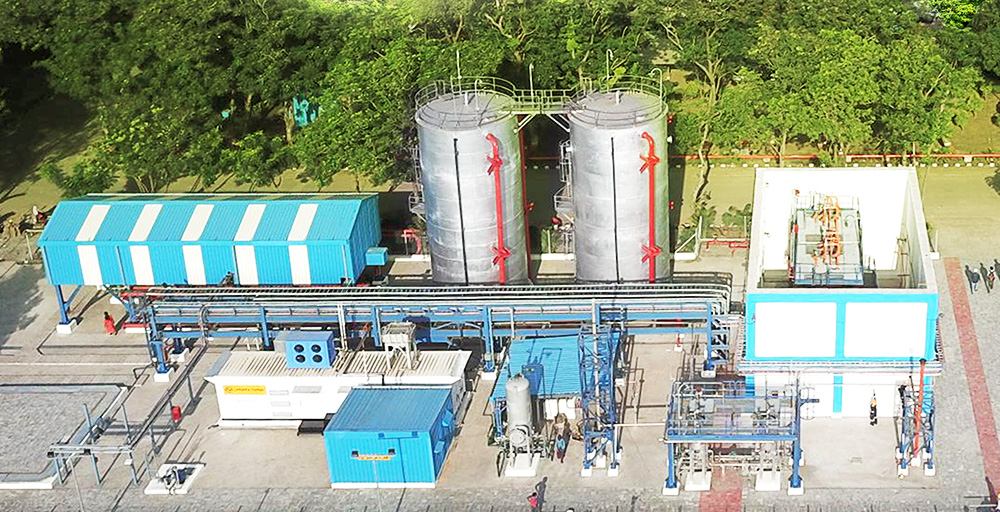India: renewable developments
By Julian Atchison on September 14, 2022
Avaada Group to develop million-tonne-per-year plant in Rajasthan
Avaada Group and the Rajasthan state government will jointly develop a $5 billion, million-tonne-per-year renewable ammonia plant in the city of Kota, along with new build renewable energy generation.
Green energy transition is vital to (India’s) Atmanirbharta (“self reliance”) and will pave the way towards net-zero goals. Aligning with the nation’s vision of self-reliance, at Avaada, we aim to make India energy independent by focusing on green energy security.
Avaada Group Chairman Vineet Mittal in his organisation’s official press release, 24 Aug 2022
Renewable hydrogen at the Hazira manufacturing complex

Indian multinational Larsen & Toubro (L&T) has switched on a new renewable hydrogen plant for its Hazira manufacturing complex in Gujarat. Alkaline and PEM electrolysers (800 kW total) are working side-by-side, powered by solar and battery storage systems. Though the 300 tonne per year plant is relatively small, it represents an important decarbonisation step for L&T, who will use the hydrogen onsite for power generation (blending with gas) and petrochemicals & polymers manufacture (including ammonia). Electrolysis by-product oxygen will be also captured and used in welding & cutting applications.
POSCO, Greenko to join forces on hydrogen & ammonia

Korean steelmaker POSCO and Greenko – India’s second-largest renewable energy organisation – have signed an MoU to cooperate in green hydrogen and ammonia production in India. POSCO has identified India as a strategic location for a large-scale renewable hydrogen production project, given the government’s “active support” for the growing industry. In early August, POSCO and ACWA Power signed a similar agreement.
Low-hanging fruit to decarbonise the fertiliser sector in India
At our recent Australia conference, we heard an update from IEEFA analyst Kashish Shah on the immediate opportunity for renewable ammonia in India. With current subsidies for the Indian fertiliser sector surging above 1 trillion Rupees (US$13 billion) annually, domestically-produced electrolytic hydrogen and renewable ammonia presents a terrific opportunity to relieve this economic burden. Watch the full conversation on our YouTube channel.